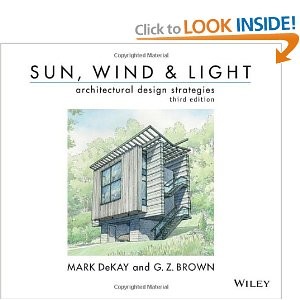
![]() Vital Contribution, see also Priority One, Other Books Below
Vital Contribution, see also Priority One, Other Books Below
August 23, 2007
David Holmgren
This is for me a very important book, one of a handful that joins the Ecological Economics volumes crafted by Herman Daly and others, and also the Natural Capitalism endeavors of Paul Hawkin, Anthony Lovins. The author excels at rendering logical, sequential, and integrated concepts, all of which lead us to the inevitable conclusion–as the author intends–that human intellect, social networks, an appreciation for diversity as the foundation for cross-fertilization, and the enormous potential of the five billion poor–all suggest that a non-technological renaissance may be upon us, and that the bottom-up action of many minds could yet destroy the still-prevailing industrial, top-down control, centralizing of wealth through violence, and externalization of “true cost” to the unwitting public that no longer understands history or that the prevailing shadowy coalitions of bankers, corporate chieftains, private armies, spies, criminals, and terrorists.
My greatest surprise came at the very end, where the author provides a post-9/11 epilogue, and says: “There is abundant evidence that September 11 was an outcome of these shadowy coalitions, which link global energy corporations, US foreign policy, the global “intelligence community,” Islamic fundamentalists, arms dealers, and illegal drug trade. Discussion of this bizarre symbiosis [elsewhere he puns on `Bush Laden'] remains beyond the pale of mainstream media….and is the best example of the paralysis of public discourse due to an absence of language to comprehend top-down thinking and bottom-up action as a new mode of power [sustainable community-oriented end-user driven values and behavior and investments].
Every page of this book offers up useful insights and compelling arguments for stopping the current immolation of the Earth and going back to 1491 and the holistic integration of systems ecology, landscape geography, ethno-biology, and cybernetics, along with the co-integration of ecological, cultural, economic, and political. Later in the book the author mentions the importance of integrating religion and science.
He is quite clear, quoting Stuart Hill, that first values must be defined, and only then can sustainable design begin. I have a note on holistic methods that use culture to integrate and promulgate psycho-social knowledge and wisdom with bio-ecological sustainable design.
The author provides a sharp critique of education today as reductionist, fragmented, rote, and disconnected from experience. In this vein, let me note that a World Bank official told me on the 21st of August that the CIA analysts that come to the World Bank in search of knowledge are “too young, lack knowledge, and have a propensity to put forward hypotheses (e.g. about Darfur and the region) that are frightening in their ignorance.” On a positive note, while I have always been the #1 Amazon reviewer for non-fiction, I only entered into the top 100 and then the top 50 over-all, when Dick Cheney succeeded in frightening a significant portion of the population back into reading non-fiction. I consider it my sacred duty to be a human version of the Cliff Notes for all serious readers concerned about the future of the Republic.
The author specifies that the general public (that is to say, the 90% of us that have not looted the commonwealth but rather been subtly enslaved) is back to 1978 in terms of quality of life and sufficiency of income. All our hard word has enriched a few and left the Republic with bridges that collapse for lack of sustained investment in the public interest.
The author slams “just enough, just in time” logistics as unsustainable madness, and throughout the book, with both text and illustrations, shows how we must balance between “slow, steady, small” and “fast, random, big.”
I liked the references to the role of the landscape as a means of storing energy, water, nutrients, and carbon. The author stresses the importance of understanding entropy (example from other work: water can be desalinated, but the energy cost, in the absence of renewable energy, is unaffordable over time). The author quotes Natural Capital many times, and I regard this book as a perfect complement to that strategic work–this is the operational, tactical, and technical counterpart. See also Priority One.
The author provides both maxims and principles in this book.
The maxims:
1. All observations are relative
2. Top-down thinking, bottom-up action
3. The landscape is the textbook
4. Failure is useful so long as we learn
5. Elegant solutions are simple, even invisible
6. Make the smallest intervention necessary
7. Avoid too much of a good thing
8. The problem is the solution
9. Recognize and break out of design cul-de-sacs
Permaculture design principles:
1. Observe and Interact
2. Catch and Store Energy
3. Obtain a Yield
4. Apply Self-Regulation and Accept Feedback
5. Use and Value Renewable Resources and Services
6. Produce No Waste
7. Design from Patterns to Details
8. Integrate Rather than Segregate
9. Use Small and Slow Solutions
10. Use and Value Diversity
11. Uses Edges and Value the Marginal
12. Creatively Use and Respond to Change
The author tells us that self-reliance is a form of consumer boycott and also a form of political action.
In addition to sustainable design, the author believes that maintenance engineering has a bright future.
He points out that recycling uses much more energy than re-use.
He notes that the failure of the elites to self-regulate their greed is a recurring problem (violent comprehensive revolutions are often set off when a precipitating outrage follows a long precondition of concentrated wealth and externalized waste).
The sins of the father will curse seven generation (similar to Native American concept of making consensual decisions that are known to be relevant seven generations into the future–what Stewart Brand calls the Clock of the Long Now.
The author emphasizes that the world's poor represent a vast pool of human resources and capabilities as well as (CKP's point) a four trillion dollar marketplace.
Other helpful books in this domain:
Priority One: Together We Can Beat Global Warming
The Clock of the Long Now: Time and Responsibility
Ecological Economics: Principles And Applications
Natural Capitalism: Creating the Next Industrial Revolution
The Manufacture of Evil: Ethics, Evolution and the Industrial System
Voltaire's Bastards: The Dictatorship of Reason in the West
Diet for a Small Planet
Faith-Based Diplomacy: Trumping Realpolitik
The Fortune at the Bottom of the Pyramid: Eradicating Poverty Through Profits (Wharton School Publishing Paperbacks)









